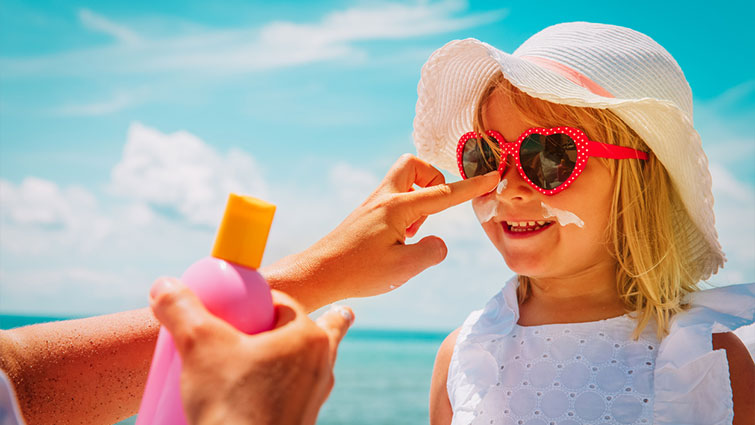Sunscreen is the most important step in a skincare routine for all ages. If you are not already wearing sunscreen daily, here is a sign to incorporate sunscreen into your a.m. skincare routine, so keep reading to learn how to get started!
What is SPF?
SPF short for Sun Protection Factor, is how we measure the protection from sun's UVB rays. For example, SPF 15 blocks 93% of UVB rays, SPF 30 blocks 97%, and SPF 50 blocks 98%. If your skin normally burns after 10 minutes of sun exposure, applying an SPF 15 sunscreen would let you stay in the sun without burning for approximately 150 minutes (a factor of 15 times longer). However, this is only a rough estimation depending on skin type, sunlight intensity, and amount of sunscreen used.
What are UVB and UVA rays?
An easy way to differentiate the two rays is UVA(geing) and UVB(urning). Both rays have overlapping effects — can cause burns and premature ageing — but UVA rays are mostly responsible for fine lines and dark spots, whereas UVB rays play a role in producing skin cancers and sunburns.
Choosing the right sunscreen
Since there are a plethora of sunscreens available on the market, you will want to ensure your sunscreen is "broad-spectrum", which means it protects from both UVA and UVB rays.
For best protection, experts recommend staying between SPF 30 and 50, applying the proper amount (1/2 a teaspoon of sunscreen for your face and neck, and one ounce for full body coverage), and reapplying every 2 hours. If you swim or sweat a lot, you should reapply more frequently. These recommendations apply to people of all skin tones. Also, remember to put on your sunscreen 30 minutes before being out in the sun!
Isn't higher SPF sunscreen better?
Sunscreens with really high SPFs, such as SPF 75 or 100, do not provide significantly greater protection than SPF 30 sunscreens and mislead people into thinking they offer more protection than they actually do.
The different types of sunscreen
There are two main types of sunscreen — physical (aka mineral) and chemical. Both absorb the sun's UV rays to help prevent skin damage, however, physical sunscreen can reflect some UV rays. But, neither is necessarily better than the other, they just use different active ingredients.
Chemical SPFs normally use active ingredients like avobenzone and homosalate, while physical SPFs contain zinc oxide and/or titanium dioxide.
Here are a few sunscreens ranging from SPF 40 to SPF 50 that you can find on our site.

Earth Mama Baby Mineral Sunscreen Lotion



















